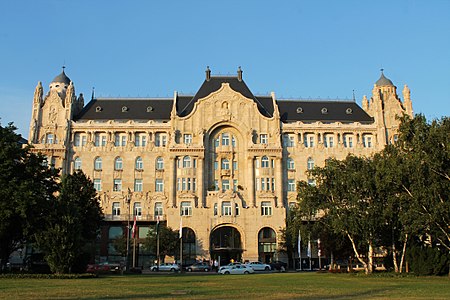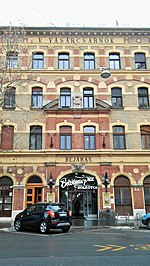Gresham Palace
1906 establishments in Austria-HungaryArt Nouveau apartment buildingsArt Nouveau architecture in BudapestArt Nouveau commercial buildingsArt Nouveau hotels ... and 4 more
Buildings and structures in BudapestFour Seasons hotels and resortsHotel buildings completed in 1906Hotels in Budapest

The Gresham Palace (Gresham-palota) is a building in Budapest, Hungary; it is an example of Art Nouveau architecture. Completed in 1906 as an office and apartment building, it is today the Four Seasons Hotel Budapest Gresham Palace, a luxury hotel managed by Four Seasons Hotels. It is located along the River Danube, adjacent to Széchenyi Square and the eastern terminus of the Széchenyi Chain Bridge.
Excerpt from the Wikipedia article Gresham Palace (License: CC BY-SA 3.0, Authors, Images).Gresham Palace
Széchenyi István tér, Budapest Lipótváros
Geographical coordinates (GPS) Address External links Nearby Places Show on map
Geographical coordinates (GPS)
| Latitude | Longitude |
|---|---|
| N 47.499747222222 ° | E 19.047980555556 ° |
Address
Gresham-palota
Széchenyi István tér 5-6
1051 Budapest, Lipótváros
Hungary
Open on Google Maps










